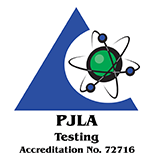Measurement of Water Activity, or Available Water
Water activity, or aw, is a measure of the free moisture in a product and is defined as the ratio of vapor pressure of a substance to that of pure water at a specified temperature.
Water activity’s usefulness a food quality and safety measurement was suggested when it was obvious water content (% or total moisture) could not adequately account for microbial growth fluctuations because the amount of water present often does not adequately characterize the capacity to find water or to limit its escaping tendency.
The water activity of a food product describes the degree to which water is “bound” in the food, and its availability to participate in chemical/biochemical reactions and growth of microorganisms. Hence, texture, non-enzymatic browning reactions, enzymatic activity, lipid oxidation, and other aspects of foods may be influenced by manipulation of aw levels.
The amount of water removed from or added to a food depends on the nature and amount of water-soluble substances (water binding capacity) present in the product.
The simplest way to reduce water is with a process which drives off water, i.e. cooking, baking or dehydration.
The second method involves tying up the free water by the addition of solutes, usually sugars or sodium chloride (salt). This creates an imbalance in osmotic pressure which draws the water from cells.
Water activity is defined as the ratio of the water vapor pressure of a food (P) to that of pure water (Po).
aw = P/Po
Another way to think about it is:
the weight of water desorbed from the food into the vapor phase (P), and its ratio to the vapor pressure of pure water (Po) at the same temperature, describing the waters escaping tendency of fugacity ratio.
The aw of pure water is 1.000. Water activity is measured in a range from 0.030 to 1.000. The closer a food products value is to 1.000, the more water that product has available to participate in various chemical and physical reactions.
Water activity is a better index for microbial growth that water content.
Water activity better predicts the growth of microorganisms because microorganisms can only use available water, which differs considerably depending on the solute. On average, ions bind the most water, whereas polymers bind the least water; sugars and peptides fall into an intermediate position. At the same molecular concentration, salt lowers the water activity more than sugar.
Because of the strong influence of aw on the wholesomeness and safety of many foods, regulations specifying aw levels have been established.
Measurement of Acidity or pH
The term pH is defined as the logarithm of the reciprocal of the hydrogen ion concentration [H+] in solution. It measures the effective acidity–the degree or intensity of acidity. It is determined by measuring the difference in potential between two electrodes immersed in a sample solution.
Microorganisms generally have optimum and minimum levels of aw and pH for growth depending on other growth factors in their environment. Water activity and pH values can be used to predict which microorganisms will grow in a food. Microorganisms require water of a specific energy level to grow and survive. Additionally, the different species of microorganisms have pH requirements which must be met for growth to occur.

